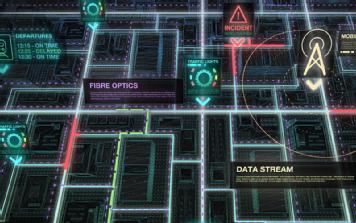WMG News - Latest news from WMG
What does 5G offer over 4G communications for Connected and Automated Mobility?
 Comment from Dr Matthew Higgins, Associate Professor for Connectivity and Wireless Communications, WMG.
Comment from Dr Matthew Higgins, Associate Professor for Connectivity and Wireless Communications, WMG.
As is becoming ever more apparent, Connected and Automated Mobility (CAM) is one of today’s most exciting research and innovation themes within both industry and academia.
It is being demonstrated now on a daily basis through the media that CAM may provide real world impact on societal issues around safety, traffic flow and emissions.
Connections with the roadside infrastructure
Whilst an automated vehicle is able to make decisions on how to judge local situations, the ‘connected’ element is pivotal to enhancing the decision making process to include information from the wider road network.
For example, the ability for CAM to exchange inertia, LiDAR, camera, and radar sensor data, alongside video data from roadside infrastructure provides each vehicle with timely awareness of what is beyond their isolated line of sight. This in turn enables behaviours such as collision avoidance, adaptive speed control or platooning.
A key factor for this to happen is the networks’ ability to seamlessly share high volumes of data with appropriate timeliness.
As consumers we are all used to the ‘G’, or generation, labelling which is attached to our phones. The dominant generation of devices are now 4G, which superseded 3G devices through technical changes in the way the network was designed and led to faster speeds with more responsiveness for our current data driven lifestyle.
Enhancing collision avoidance capabilities
5G is used to describe the fifth generation of mobile communications technologies. Crucially, 5G is more than just a faster internet connection. As a direct comparison over 4G, 5G will have a peak data rate 20 times currently on offer – up to 20Gbit/s, a user experience data rate 10 times that of now – up to 100Mbit/s, but it is the fall in latencies by 10 times to 1ms that makes 5G useful in CAM.
This fall in latency (the time it takes for data to complete its journey) will be critical to enhancing collision avoidance capabilities where every millisecond counts. Also the enhanced peak date rate will allow the sharing of high definition images between infrastructure and vehicles which may assist in so called ‘smarter decisions’ that include contextual information of the situation.
The path to 5G communications providing these capabilities is ongoing, but progressive initiatives by Government from the Centre for Connected Autonomous Vehicles (CCAV) and the Department for Culture, Media, and Sport (DCMS) are accelerating the UKs international competitiveness.
